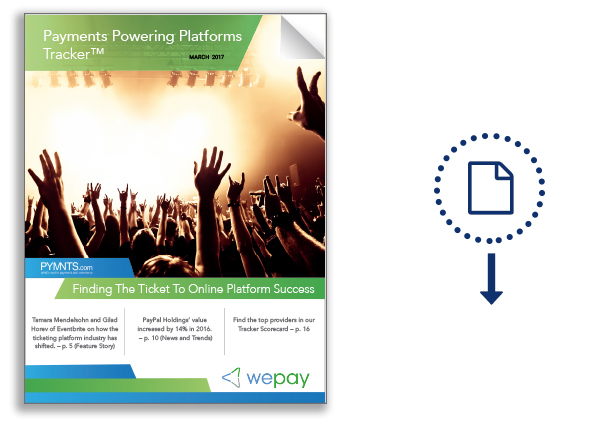Even as digital platforms of all kinds, including fundraising, blogging and sales platforms, have become more popular with the average consumer, ticketing systems remain perhaps the most popular among consumers.
According to recent industry research, more than 19 million consumers in the United States alone purchased tickets to a sporting event online within the past 12 months, and another 15 million consumers used online ticketing platforms to purchase tickets to cultural events like concerts or other performances. These platforms are more popular than ever among consumers, with online sales for both cultural and sporting events seeing an increase of roughly four million consumers since 2012.
But while the industry may bring in plenty of consumers, there are numerous challenges that these providers face. The payments-powered platform and event ticketing space have both changed radically in the past few years. Consumers have new payment options at their fingertips and are more concerned with security than ever before, and the space is a competitive one, filled with big-name merchants.
Gilad Horev and Tamara Mendelsohn are familiar with these challenges, as VP of product and head of payments, respectively, for Eventbrite. The company, founded when the online ticketing industry was much smaller than it is now, was one of the first online ticketing platforms. As a result, the company had to build its initial payments solution in-house and has seen the changes in payments and the ticketing industry firsthand in the years since, while updating their in-house payments system and working with outside partners to improve the platform.
PYMNTS recently caught up with Horev and Mendelsohn for a discussion about online ticketing platforms and what’s coming up next in the space.
Keeping Pace with Changing Spaces
Advertisement: Scroll to Continue
Eventbrite was founded by Julia Hartz, Kevin Hartz and Renaud Visage, who are now the company’s CEO, executive chairman and CTO, respectively. At the time, they saw that the online event ticket market clearly had room for growth and had to become more user-friendly, particularly for smaller event organizers who wanted to make tickets available to a wider customer base online.
With a lack of suitable third-party solutions available when the company was founded in 2006, the company began to construct its own payments system. Technical head Visage and other founders designed the platform to be intuitive and simple to use for any organizer or consumer, even those who were not familiar with online purchases.
“The founders set out to build a system that could be used by anyone, anywhere, very much inspired by blogging platforms like WordPress that were taking off at the time that wanted to give anyone, anywhere the power to publish online,” Mendelsohn said. “[Eventbrite’s] founding thesis was very similar. They wanted to allow anyone to publish their events online and collect money.”
The result was a simple system that accepted credit or debit card payments and enabled smaller event venues and organizers with the same technology and solutions that larger venues and event companies could afford. However, the events space quickly shifted, and a wide range of events, from small-scale, local shows to international events, began utilizing the platform.
The payments space also shifted quickly, as consumers began to become more concerned with online security and utilizing new payment options based around technology like smartphones, other mobile devices and, more recently, the emergence of contactless payments.
As a result, the company quickly shifted its platform development toward a wider range of events, Mendelsohn said. The changes sought to make it easier for large-scale promoters like the TriBeca Film Festival and music festivals like Boston Calling to promote and sell tickets to events, while also giving smaller organizers like yoga instructors or small venues a place to reach their consumers, who were increasingly expecting to make reservations and ticket purchases online.
The company now offers not just a standard website-based ticketing platform, but also smartphone apps that allow organizers to manage their events, collect payment and check tickets during the event itself on a mobile device, as well as enable consumers to make purchases.
Horev, the company’s head of payments, noted that this in-house system has allowed Eventbrite to fulfill its goals of bringing online ticket sales to as many venues and organizations as possible.
“Since our early days back in 2006, we’ve been focused on a payments model that would help achieve our vision to democratize ticketing. Eventbrite has continuously updated and evolved its payment model, embracing new and better technologies as they have become available,” he explained. “The way our payment system is architected has enabled us to take advantage of the impressive innovation in the payments space in recent years.”
Standing Out in a Crowded Space
As more people have used not just Eventbrite but a wide range of ticketing sites, the space has become a particularly competitive one, with large promoters like Ticketmaster and LiveNation vying for control, along with several other smaller platforms.
While Eventbrite built its initial solution in-house and has largely maintained it since, according to Horev, Eventbrite has also turned to several partners in order to offer new tools to organizers and to stay competitive in the crowded event ticketing space.
He noted that collaboration has become an especially important part of the company’s business model, as the events the company supports have gotten larger and more diverse than initially anticipated.
“From the very beginning, Eventbrite has been very focused on building an open platform and working with partners,” Horev said. “We want to be able to give organizers of all sizes the tools that they need. We have a huge diversity in the type of events and organizers we see on the platform, and they all have slightly different needs. So the ability to open the platform and open APIs to work with partners has allowed us to have a very adaptive platform.”
Horev also pointed out that collaboration has been especially important when the company has looked to build on and improve its in-house payments system.
“Payments are critically important to a thriving global marketplace, and, through a strategy of multiple partnerships, we’ve avoided the pitfalls of building our product and back office around one sole payment partner,” he said. “This affords us the redundancy to switch processor[s] when we need to, the capability to pay out our organizers in flexible ways and the ability to meet the local payment needs of our global customer.”
Mendelsohn said the company has also invested in new technology intended to make the event experience more enjoyable for consumers and more profitable for organizers, like RFID wristbands given to attendees of large events such as music festivals. The wristbands function as a ticket to the event and can also be linked to a credit card, debit card or mobile wallet. The wristbands are designed to help make purchases at large events easier, enabling fans to make more purchases than they would otherwise without having to worry about keeping their cash or cards safe while at the event. This, in turn, increases sales for promoters and venues.
Mendelsohn said that in the quickly changing and highly competitive ticketing space, developments like these are key to pleasing both event organizers and their customers.
“Our challenge is really to continue to look forward, to continue to push these innovations and create solutions that help make event organizers more successful, to help get tickets into a consumers’ hands and make sure that attendees have the best experience possible,” she said.
As online sales have become more common, the ticket-buying experience has itself become a crucial part of the event-going experience, effecting everything from where a customer’s seats are located to how they make purchases while at an event. It seems that as this space continues to evolve, technology and an ability to adapt to a quickly shifting field may be the ticket to online event platform success.
……………..
To download the March edition of the PYMNTS Payments Powering Platforms Tracker™, click the button below.

About the Tracker
The Payments Powering Platforms Tracker™, powered by WePay, serves as a monthly framework for the space, providing coverage of the most recent news and trends, along with a provider directory highlighting the key players contributing across the segments that comprise the payments-integrated platform ecosystem.




